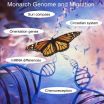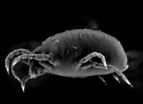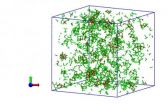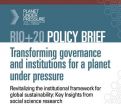(Press-News.org) The Monarch butterfly is famous for its ability to travel up to 2,000 miles from North America to central Mexico every fall. Now, it's enjoying fame of a different sort. In the November 23rd issue of Cell, researchers report the full genomic sequence of this iconic butterfly. The new genome is the first for any butterfly. It is also the first complete genome of any long-distance migrant.
"With this genome sequence in hand, we now have an overwhelming number of opportunities to understand the genetic and molecular basis of long-distance migration," says Steven Reppert of the University of Massachusetts Medical School.
Reppert's team has been studying the monarch migration for years, with a particular interest in how their brains incorporate information in time and space to find their way. Monarchs are all the more remarkable given that migrating butterflies are always at least two generations removed from those that made the journey the previous fall. "It is in their genes," Reppert said.
The researchers focused their genome analysis on pathways known to be critical for this migration, including those responsible for vision, the circadian clock, and oriented flight. The genome also revealed the complete set of genes required for synthesizing juvenile hormone. Changes in that hormone are required for migrating butterflies to shut down reproduction and extend their lifespan up to nine months. By comparison, non-migrants only live for about a month.
Comparisons of the new monarch genome with other insect genomes also reveal that butterflies and moths (Lepidoptera) are the fastest evolving insect order yet examined.
"Overall," the researchers write, "the attributes of the monarch genome and its proteome provide a treasure trove for furthering our understanding of monarch butterfly migration; a solid background for population genetic analyses between migratory and non-migratory populations; and a basis for future genetic comparison of the genes involved in navigation yet to be discovered in other long-distance migrating species, including vertebrates like migratory birds."
INFORMATION:
Introducing the monarch butterfly genome
2011-11-24
ELSE PRESS RELEASES FROM THIS DATE:
Is short stature associated with a 'shortage' of genes?
2011-11-24
New research sifts through the entire genome of thousands of human subjects to look for genetic variation associated with height. The results of the study, published by Cell Press in the December issue of the American Journal of Human Genetics, suggest that uncommon genetic deletions are associated with short stature.
Height is a highly heritable trait that is associated with variation in many different genes. "Despite tremendous recent progress in finding common genetic variants associated with height, thus far these variants only explain about 10% of the variation ...
UMMS scientists present draft sequence of monarch butterfly genome
2011-11-24
WORCESTER, Mass. – Each fall millions of monarch butterflies from across the eastern United States use a time-compensated sun compass to direct their navigation south, traveling up to 2,000 miles to an overwintering site in a specific grove of fir trees in central Mexico. Scientists have long been fascinated by the biological mechanisms that allow successive generations of these delicate creatures to transverse such long distances to a small region roughly 300 square miles in size. To unlock the genetic and regulatory elements important for this remarkable journey, neurobiologists ...
Researchers discover clues to developing more effective antipsychotic drugs
2011-11-24
Researchers from Mount Sinai School of Medicine, have identified the pattern of cell signaling induced by antipsychotic drugs in a complex composed of two brain receptors linked to schizophrenia. The discovery should allow researchers to predict the effectiveness of novel compounds for the treatment of schizophrenia and other serious mental disorders and may accelerate the development of better antipsychotic drugs. The findings are published in the November 23 issue of Cell.
Until now, the molecular mechanism through which current treatments for schizophrenia achieve ...
Big pest, small genome
2011-11-24
SALT LAKE CITY, Nov. 23, 2011 – A University of Utah biologist and an international research team decoded the genetic blueprint of the two-spotted spider mite, raising hope for new ways to attack the major pest, which resists pesticides and destroys crops and ornamental plants worldwide.
The voracious mites, which technically are not insects, can eat more than 1,100 plant species – a rare trait. The mites' newly revealed and sequenced genome contains a variety of genes capable of detoxifying pesticides as well as toxins plants use to defend themselves, the scientists ...
Hours of Service Rules for Commercial Truck Drivers Traveling Through Atlanta
2011-11-24
Almost a year ago, the Federal Motor Carrier Safety Administration (FMCSA) proposed new limits on Hours of Service (HOS) rules for commercial drivers. While the intent was to improve highway safety for all who travel by limiting fatigue among truck drivers, the proposed changes have come under fire from trucking advocacy groups as having little impact on highway safety. The proposed changes in hours of service have not yet been finalized.
Existing Hours of Service Limitations for Commercial Drivers
HOS regulations generally apply to all drivers of commercial vehicles. ...
Supercool
2011-11-24
SALT LAKE CITY -- We drink water, bathe in it and we are made mostly of water, yet the common substance poses major mysteries. Now, University of Utah chemists may have solved one enigma by showing how cold water can get before it absolutely must freeze: 55 degrees below zero Fahrenheit.
That's 87 degrees Fahrenheit colder than what most people consider the freezing point of water, namely, 32 F.
Supercooled liquid water must become ice at minus 55 F not just because of the extreme cold, but because the molecular structure of water changes physically to form tetrahedron ...
Dana-Farber/Children's Hospital Boston study identifies possible therapy for radiation sickness
2011-11-24
BOSTON—A combination of two drugs may alleviate radiation sickness in people who have been exposed to high levels of radiation, even when the therapy is given a day after the exposure occurred, according to a study led by scientists from Dana-Farber Cancer Institute and Children's Hospital Boston.
Mouse studies of other potential therapies suggest they would be effective in humans only if administered within a few minutes or hours of radiation exposure, making them impractical for use in response to events involving mass casualties. In contrast, the larger time window ...
UN overhaul required to govern planet's life support system: Experts
2011-11-24
Reducing the risk of potential global environmental disaster requires a "constitutional moment" comparable in scale and importance to the reform of international governance that followed World War II, say experts preparing the largest scientific conference leading up to next June's Rio+20 Earth Summit.
Stark increases in natural disasters, food and water security problems and biodiversity loss are just part of the evidence that humanity may be crossing planetary boundaries and approaching dangerous tipping points. An effective environmental governance system needs to ...
Disability Insurance Claim Denied? An ERISA Lawsuit Could Help
2011-11-24
Private disability insurance can be a significant source of value for employees and their families, and they expect to be able to rely on it in their times of need. But what happens when an employee's disability insurance claim is denied?
A comprehensive federal law known as the Employee Retirement Income Security Act of 1974, or ERISA, protects the interests of participants in many types of insurance plans. ERISA sets standards for the administration of benefit plans, including the proper procedure for appealing a denial of a claim for benefits. If the claims process ...
Earth's core deprived of oxygen
2011-11-24
Washington, D.C. — The composition of the Earth's core remains a mystery. Scientists know that the liquid outer core consists mainly of iron, but it is believed that small amounts of some other elements are present as well. Oxygen is the most abundant element in the planet, so it is not unreasonable to expect oxygen might be one of the dominant "light elements" in the core. However, new research from a team including Carnegie's Yingwei Fei shows that oxygen does not have a major presence in the outer core. This has major implications for our understanding of the period ...



